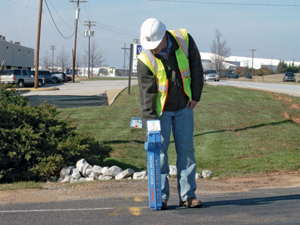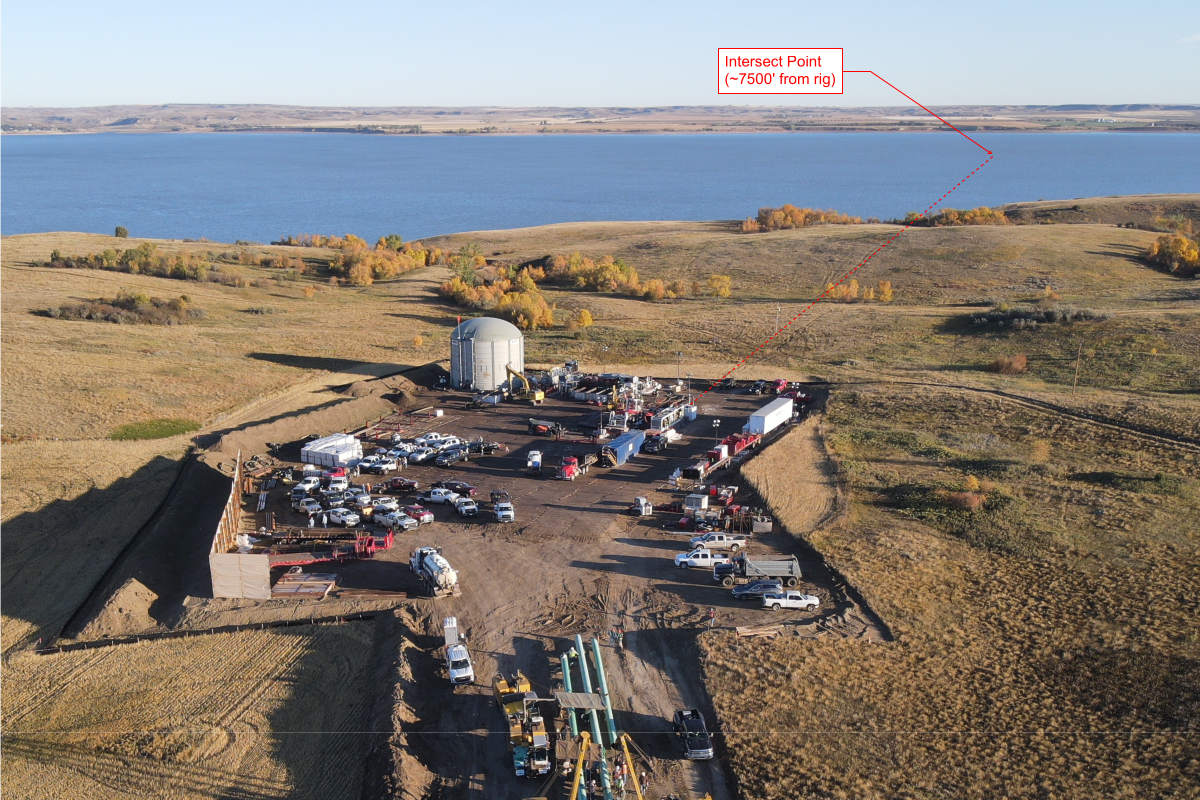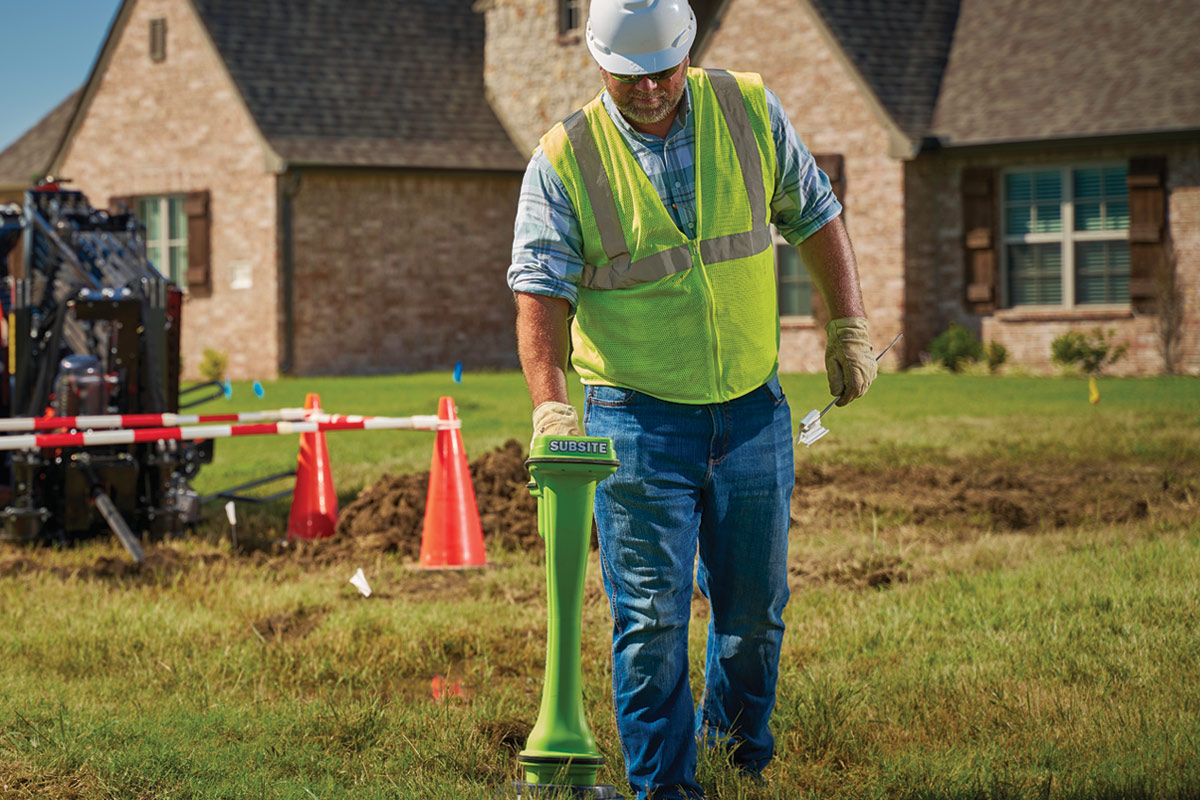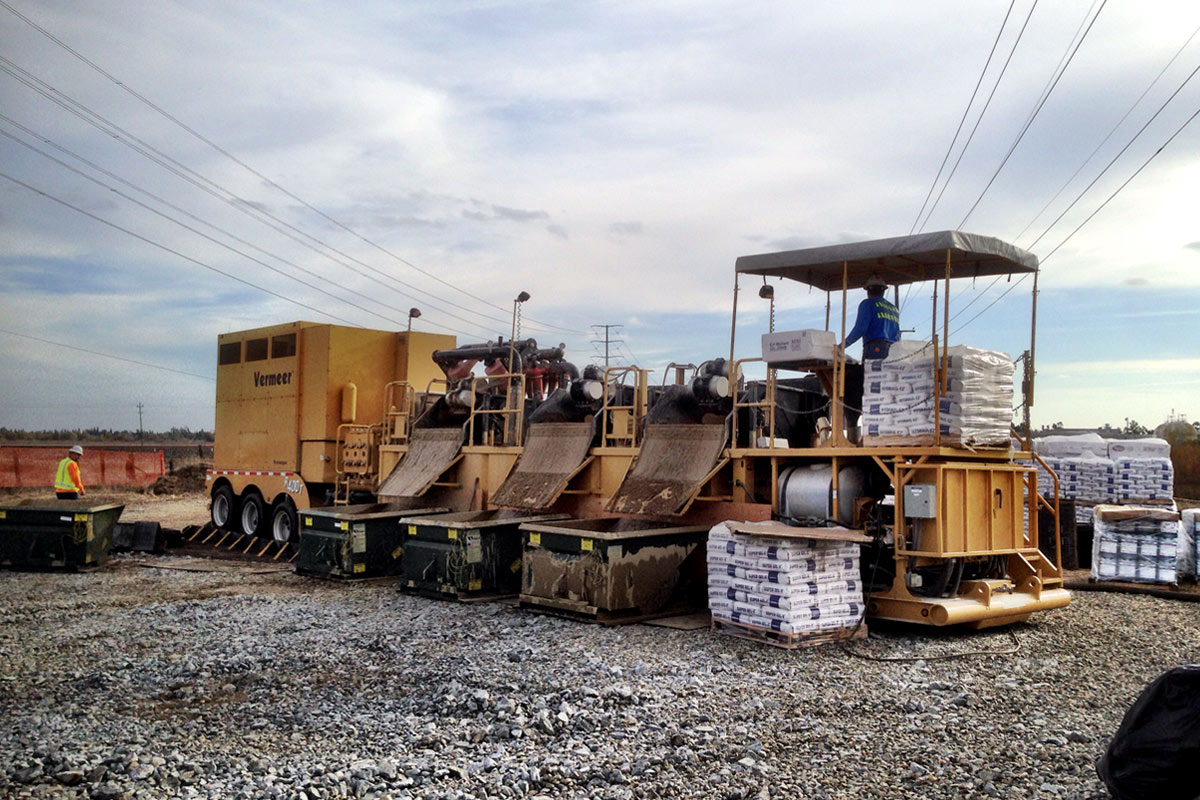Understanding Locators 101
 Locating underground utilities is becoming more of a challenge as the vast array of lines in the ground continues to increase. As the ground under our feet becomes more congested with utility lines, it’s vital to identify the location of utilities — gas, fiber, water, telecommunications and sewer — to ensure the safety of your crew and protect your bottom line.
Locating underground utilities is becoming more of a challenge as the vast array of lines in the ground continues to increase. As the ground under our feet becomes more congested with utility lines, it’s vital to identify the location of utilities — gas, fiber, water, telecommunications and sewer — to ensure the safety of your crew and protect your bottom line.
Call & Double Check the Marks
The first step before digging is to contact your state’s one call office and provide them with the location of the proposed area to be excavated. A one call contractor will visit the site and mark the location of the existing utilities. One call contractors do a good job of marking the location of existing underground lines and pipes. However, due to interference, the marks may not be as accurate as needed. In some cases, privately owned lines, unknown to the one call contractor, may never be marked.
Many contractors show up and begin excavating. That’s fine if the one call markings are accurate. However, a mark could be 6 in. off and you may not find that line. Now you need to make a decision: Do you keep going or do you contact the one call contractor and ask them to come back out?
Either way it’s costing you time and money. However, if you have utility locating equipment, you can confirm the marks that are on the ground and identify underground facilities that could have been missed.
How Locators Work
Basically, locating underground lines is similar to tuning into your favorite radio station, says Matt Manning, locating equipment product manager for McLaughlin.
Each station transmits a different signal, and locators are like a radio designed to pick up those signals, says Manning. These signals help identify the exact location of an underground utility.
Many utility lines give off a charge or transmit a signal, and in most cases each line has a different charge or signal just like radio stations. However, some lines do not give off a charge or transmit a signal. In these cases, a transmitter can be used to induce a signal onto a metal line, which allows the locator to pick up the signal.
Understanding Locating Methods
There are basically two locating methods — active and passive.
Active locating involves searching for a specific line using either the direct connection or inductive method. The locator is either attached directly to the line or if you cannot make a direct connection to the line, a frequency is selected and induced into the ground and reradiated by the utility.
Passive locating is a method used by contractors to check the area for unknown lines. The contractor will simply sweep the area with the receiver looking for utilities that radiate or reradiate frequencies, but this method does not allow the operator to distinguish between the types of lines.
Where to Start
The industry offers two types of locators — single- and multiple-frequency units — to accomplish active and passive locating. Each unit has its advantages and limitations.
Single-frequency locators have been around for decades. These systems consist of a transmitter that is placed on the ground and induces a single high-frequency signal. The signal is picked up by the underground line and then radiated back up to the receiver. Single-frequency systems work well on lines and pipes in noncongested easements, but putting a high frequency into the ground has the tendency to light up everything underground and may produce a distorted signal. In other words, you cannot distinguish whether it is a power, gas or communications line. The other limitation is that single-frequency locators cannot determine the depth of the line.
Since lines and pipes are constructed of different materials (copper, aluminum, iron, steel, etc.), a higher or lower frequency may do the best job of locating them. Multi-frequency systems (some offer up to five frequencies) allow you to tune the frequency you are putting into the ground to the type of line or pipe you are trying to locate. The lower the frequency, the better it will stay on the line you are trying to locate, thus making the job of distinguishing a gas from a water line easier.
Some locators offer a current measurement index (CMI) that measures the current you are putting onto the line. This helps distinguish the line, especially if it crosses over another line and helps ensure you are staying on the original line to be located and are not jumping to other lines in the area. Most modern receivers today can also estimate the depth of the line or pipe at the push of a button. The locator measures signal strength and uses an algorithm to convert this information into an estimated depth. However, interference can distort the depth estimate. Despite the possible inaccuracy, the estimated depth gives the contractor an idea of the location of the line or pipe as they hand dig or excavate the area with a vacuum.
If a contractor is conducting the active method of locating, there are different ways to put the locator signal on the line or pipe. Direct connection is the most common connection method in the industry. This allows workers to connect cable leads, similar to jumper cables, to the line or pipe to be located and generate an alternating current down the cable or pipe. The only issue with this method is gaining access to facilities. If you are not a contract locator or subcontractor for the telephone company, you cannot legally open up a telephone pedestal and clip onto the line.
To overcome this challenge, contractors can use a locator with good inductive capabilities. Inductive locators induce the signal into the product. The inductive method requires the user to set the transmitter on the ground. A signal radiates down through the ground onto the cable and eliminates the need to connect clamps or coils to the line or pipe.
Ground Conditions — Friend or Foe
When locating underground utilities, ground conditions can have an impact on the signal and potential interference.
Wet soil or clay is very conductive, and the moist conditions will provide a stronger signal with less interference. On the other hand, in dry soil the signal will not want to travel down the line as well causing a weaker signal, which may lead to the possibility of more interference and distortion.
If you’re working in dry soil conditions and you plan to make a direct connection to the utility, then simply pour water around where you plan to insert the ground rod into the earth. However, this will not work well in sandy soil conditions as the water will just pass through the soil. In these instances, it may be better to make a direct connection to the utility line or use a higher frequency on poor conductive soil conditions.
New Changes on the Horizon
While locator technology has not changed much in the past five years, several manufacturers are adding enhancements to help provide a clearer signal and tie the locates to GPS coordinates.
Virtually all manufacturers are putting more power into their utility locators. While this extra power does not enhance the accuracy of the unit, it does provide a clearer and higher-quality signal. Many manufacturers have also made advancements in their receiver software to help filter out the extra noise in the ground and air, helping to provide a more accurate signal and reading. The other trend occurring in the industry is linking the locator with GPS devices and mapping the utility line with latitude and longitude coordinates, thus providing an accurate location of the line for future reference.
Locators Aren’t Just for Large Contractors
Many believe locators are just for medium to large contractors who are working on major underground projects. On the contrary, smaller contractors and landscapers should be investing in locators as well.
Manning says not all states require that utilities be located up to a house or building, and this means that one call will only identify the lines in the easement.
“Typically landscapers, building contractors and fence builders aren’t working in the easement, but on private property,” says Manning. “If the utility lines are only identified in the easement, then the contractor will need to pay someone to mark the utility lines on the private property requiring extra time and money.”
We all know the danger in digging up a gas line, but if you’re doing an addition to a house and you cut the electric line, you just shut your customer off. Not a good first impression for you and your business.
Before You Purchase a Unit
While it’s important to select a utility locator that features the technology you need, don’t forget that the unit should also be simple to operate and durable.
You want to make sure that the unit is simple to use and doesn’t require you to send your operator to a day-long class to learn how to run it. In a number of cases your operator may not use the unit from week to week, and it should be simple enough for them to pick it up and recall how to use it without much instruction.
Durability is also important. Contractors take equipment in and out of a truck on a daily basis and unfortunately the locator may not be handled with absolute care. Make sure the unit is durable enough to handle your jobsite conditions.
Weather can affect your locator, so before you make your purchase ask if the unit has limitations when being used in various weather conditions, such as rain. Lastly, make sure the instrument features a multi-year warranty.
A basic single-frequency unit will range in price from $1,000 to $2,500. While a multi-frequency unit with a digital screen and depth measurement capabilities, will range in cost from $2,500 to $4,500, depending on the number of frequencies purchased.
While this may seem like a lot of money, you can lose more in one day on one simple bad mistake.
“I always tell contractors to look at it from a couple of viewpoints,” says Manning. “If having that utility locator on your jobsite speeds up the locating and potholing process by 30 minutes a day, that’s giving you 2.5 hours in a week to do something else. That’s money in your pocket.”
Greg Ehm is a technical writer with Two Rivers Marketing, Des Moines, Iowa.





Comments are closed here.